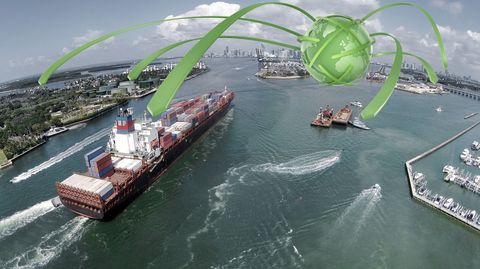Businesses in the EU and Canada will soon be able to forge stronger trade links due to the imminent introduction of a broad-ranging international commerce agreement between the two regions.
Official discussions surrounding the EU-Canada Comprehensive Economic and Trade Agreement (CETA) began in earnest in 2009, before a key political breakthrough in October 2013 negotiations to be brought to a successful close in August 2014.
Expectations are now mounting that CETA's adoption will be confirmed this year, making it an ideal opportunity for companies to educate themselves on the potential changes and benefits the free trade agreement (FTA) will bring.
Overview
The overall aims of CETA are similar to those of any FTA - namely, to bolster trade between the regions, strengthen economic relations and stimulate the creation of jobs.
CETA will do this by removing 99 per cent of the customs duties and other administrative obstacles faced by companies trading between the EU and Canada, while offering better systems of protection, a more unified regulatory approach, and opening up new opportunities for service delivery.
The EU estimates that the deal will result in a €12 billion (£9.52 billion) increase in GDP for Europe, while Canada is expecting an annual economic boost of C$12 billion (£6.48 billion).
Key points
The remit of CETA is wide-ranging and will facilitate international trade in the following ways:
- Removing custom duties - of the more than 9,000 EU tariff lines, approximately 98 percent will be duty-free on the first day CETA comes into force. The elimination of these industrial duties are expected to save European exporters around €470 million a year.
- Government procurement - following CETA's introduction, EU companies will be able to bid for public contracts in Canada at all levels of government, and vice-versa. This provides Canadian companies with access to Europe's $3.3 trillion government procurement market, while European businesses will be the first foreign companies to get this level of access to Canadian public procurement markets.
- Better regulatory cooperation - a regulatory cooperation forum is being established by the EU and Canada for the exchange of experiences and relevant information among regulators, as well as to help identify areas where regulators could cooperate. It will not have any decision-making powers, but will aid closer working between the relevant authorities
- Enhanced IP protection - laws that pertain to intellectual property rights will be brought in line under CETA, meaning companies will no longer need to fear their brands and innovations being copied unlawfully. Special status and protections will be offered to specialised regional food products.
- Facilitating trade in services - trade in services across key sectors such as financial services, telecommunications, energy and maritime transport will be made easier by CETA, particularly when it comes to the temporary movement of key personnel and the recognition of qualifications for regulated professions.
- Encouraging investment - the FTA aims to removes and alleviate barriers for investors between the EU and Canada, providing greater certainty, stability, transparency and protection for investments, while protecting the right of governments to legislate and regulate in the public interest.
Recent developments
The nations continue to work to refine and improve CETA in response to feedback, ahead of its official introduction. Last month, a new approach to investment protection and dispute settlement was agreed, in order to ensure a permanent and institutionalised approach to dispute settlement tribunals, as well as providing more detailed commitments on ethics to avoid any conflicts of interest.
A joint statement on CETA from EU commissioner for trade Cecilia Malmstrom and Chrystia Freeland, minister of international trade in Canada, said: "We have responded to Canadians, EU citizens and businesses with a fairer, more transparent, system.
"These modifications reflect our desire to reform investment protection and dispute resolution provisions and to continue working together to improve the process, including working with other trading partners to pursue the establishment of a multilateral investment tribunal, a project to which the EU and Canada are firmly committed."
Ministers in both regions remain confident that CETA will be signed in 2016 and enter into force in 2017, meaning these proposals are likely to become reality in the foreseeable future.
Companies wishing to prepare for the introduction of CETA may wish to review their ability to calculate, store and process origin data to ensure they are compliant with the new laws. The MIC Origin Calculation System (OCS) can be an ideal tool for doing so.






